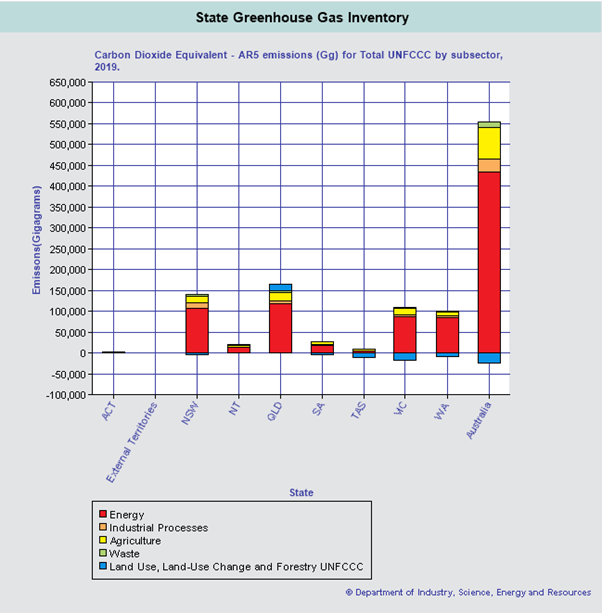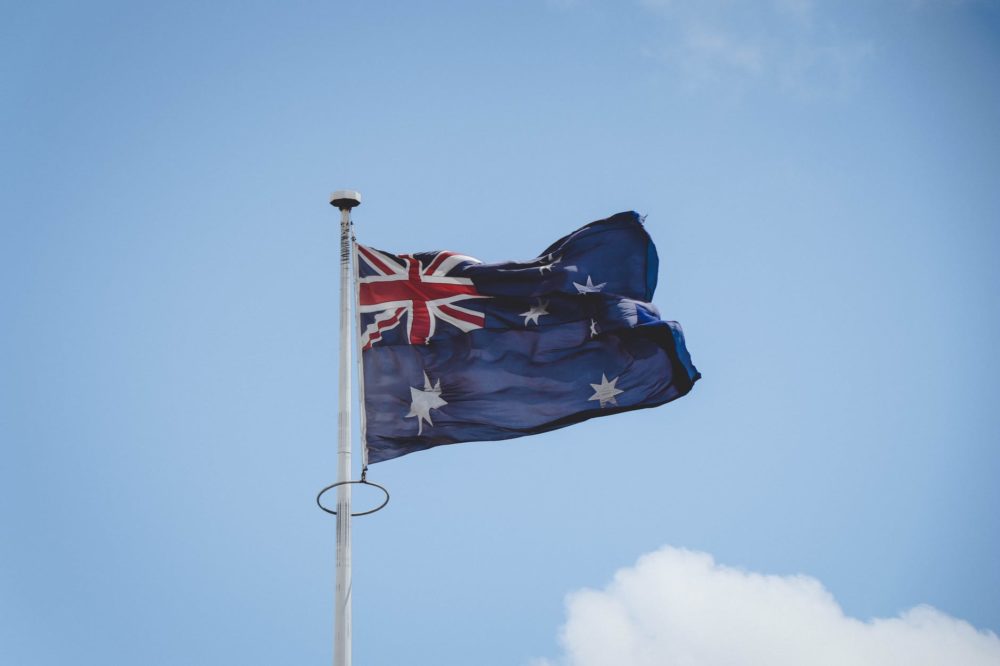Federal Government
There have been many articles published on the Federal Government’s 2021-22 Budget already, noting it is more focussed on creating jobs from the commercialisation of low emissions technologies and supporting the insurance market than on reducing climate change, and pointing out the Australian Government’s lack of action is increasingly out of step with other developed countries. Here is the list of what is in the Budget in relation to climate change.
-
$1.6 billion over ten years from 2021-22 (including $761.9 million over four years from 2021-22) to incentivise private investment in technologies identified in the Government’s Technology Investment Roadmap and Low Emissions Technology Statements, grow new export industries, create jobs and reduce emissions.
-
$1.2 billion over ten years from 2021-22 (including $643.4 million over four years from 2021-22) to create a technology co-investment facility that supports the development of regional hydrogen hubs, carbon capture, use and storage technologies, very low-cost soil carbon measurement and new agricultural feed technologies, a high-integrity carbon offset scheme in the Indo-Pacific region, and support the implementation of the Technology Investment Roadmap and Low Emissions Technology Statements
-
$279.9 million over ten years from 2021-22 (including $81.7 million over four years from 2021-22) to establish the below baseline crediting mechanism recommended by the King Review[1] and help realise abatement opportunities in large industrial facilities.
-
$26.4 million over four years to support Australian businesses and supply chains to reduce their energy costs and improve productivity through the uptake of more energy efficient industrial equipment and business practices
-
$10.4 million over four years to expand the range of certifications offered by the Climate Active program and ensure it remains a best practice standard and certification scheme for Australian businesses looking to voluntarily reduce emissions.
-
$50.0 million over ten years from 2021-22 to establish an early-stage seed capital financing function within the Australian Renewable Energy Agency (ARENA). The cost of this measure will be met from within the existing resources of ARENA.
However, as with quarantine action during the pandemic, looking at the federal government alone does not tell the whole story. Regulation of the power sector is a state responsibility. State, territory, and local government action against climate change is starting to become significant, and is accelerating quickly, albeit off a low base in most cases.
State and Territory Governments
As at July 2020, all state and territory governments had adopted a target of renewable energy consumption of 50% or greater by 2030. Legislative support is already in place in Victoria, South Australia, Tasmania, and the ACT.
All state and territory governments have adopted a target of net zero emissions by 2050 or earlier.
Specific measures in place include:
- increasing investment in renewable energy generation and battery storage projects
- improving energy efficiency in transport and infrastructure
- establishing funds or grants to support projects that contribute to reducing carbon emissions.
| Government | Renewable Energy Commitment | Carbon Commitment |
| Australian Federal Government | No commitment post 2020 |
NOT ON TRACK to achieve 26-28% emissions reduction from 2005 levels by 2030 (Continuation of current trajectory suggests Australian emissions in 2030 will exceed those in 2005.) |
| NSW | NOT ON TRACK to achieve 50% renewable energy by 2030 |
35% reduction in greenhouse gas emissions on 2005 levels by 2030 Zero net emissions by 2050 |
| VIC |
50% renewable energy by 2030 50% share of new car sales for electric vehicles |
28-33% emissions reduction by 2025 45-50% emissions reduction by 2030 Zero net emissions by 2050 |
| QLD | NOT ON TRACK to achieve 50% renewable energy by 2030 | Zero net emissions by 2050 |
| SA |
100% renewable energy production by 2030 Aspirational target of 500% by 2050 |
Zero net emissions by 2050 |
| WA | 100% renewable energy by 2030 | Zero net emissions by 2050 |
| TAS |
100%+ renewable energy production now 200% renewable energy by 2040 |
Zero net emissions target by 2050 |
| NT | 50% renewable energy by 2030 | Zero net emissions by 2050 |
| ACT | 100% renewable energy production now | Zero net emissions by 2045 |
| Local governments | Some have 100% renewable energy targets, but the dates vary | Some have zero net emissions targets, but the dates vary[2] |
Table updated by Evalue8 Sustainability as at 18 May 2021.
The uneven distribution of highly emitting industries across Australia makes achieving progress more politically challenging in some locations than others. Queensland is the largest emitter (accounting for about a third of Australia’s total greenhouse gas emissions), outstripping NSW, the second highest, despite its smaller population. The Queensland Government has set targets but is not currently on track to achieve them, and a change of government could see these targets set aside completely.

Estimates are based on the IPCC classification system used to report Australia’s greenhouse gas emission inventory under UNFCCC guidelines and to track Australia’s progress towards its 2030 Paris target. Please see the National Inventory Report for further information.
Emission estimates for some subsectors are not available for States and Territories due to confidentiality constraints.
As military transport is considered a Commonwealth operation, it has not been allocated to individual States and Territories.
Local Governments
The organisation “100 percent renewables” notes that 74 local governments have made commitments to achieve zero net emissions before their state or territory as a whole, and 96 have declared a climate emergency.
Melbourne, Sydney, Brisbane and Canberra are already carbon neutral cities. Perth has committed to a carbon reduction target of 20%. Hobart does not have an official target but has commenced carbon reduction initiatives.
The Cities Power Partnership is the largest local government climate program in Australia, with 127 councils participating, covering a population of 11 million (43% of Australia’s population). Participation in this program requires action but not formal commitment to targets, to encourage local councils to make a start and benefit from sharing existing knowledge and tools. Many of the local councils participating have 100% renewable energy production commitments and zero net emission targets, but for different dates.
The Global Covenant of Mayors is the largest global alliance for city climate leadership. 27 Australian councils are members.
C40 is a network of the world’s megacities committed to addressing climate change. Melbourne and Sydney are members.
The Future
The proportion of Australians concerned about climate change is increasing over time, as it is in most countries. In 2019, the Australia Institute sampled 1,960 adult Australians and found that 81% were concerned about climate change, an increase of 3% relative to 2018[1]. (No report was published in 2020.) The issue in Australia is how willing the voting population is to pay to avoid it.
Fortunately, that appears to be increasing too, as shown by the growth of the green economy.
This means that organisations that reduce their emissions can expect this to impact on customer and staff loyalty, and customer and supply chain willingness to pay for greener products. This is where Evalue8 Sustainability comes in.
Evalue8 Sustainability produces software that helps you measure your emissions, provides advice on ways to save energy that are likely to be cost effective for you, and enables you to determine if your efforts to reduce them over time are working, while letting you focus on your core business.
Our software provides the reports and visual aids you need to track your progress over time and demonstrate your environmental performance to your shareholders. Our value-add is that we take the hard work out of becoming cleaner and greener, by drawing on information in your accounting software, enabling you to self-assess your emissions without the help of expensive consultants or spending months of labour tracking down invoices.
Try our software today. Hop over to https://evalue8.net/ and see what we can do for you.
[2] Local government commitments as at 22 September 2020 are summarised at https://100percentrenewables.com.au/ambitious-climate-action-commitments-local-governments-states/ but date quickly. Readers are advised to check specific council data at source.
[3] Australia Institute Climate of the Nation Report 2019.

